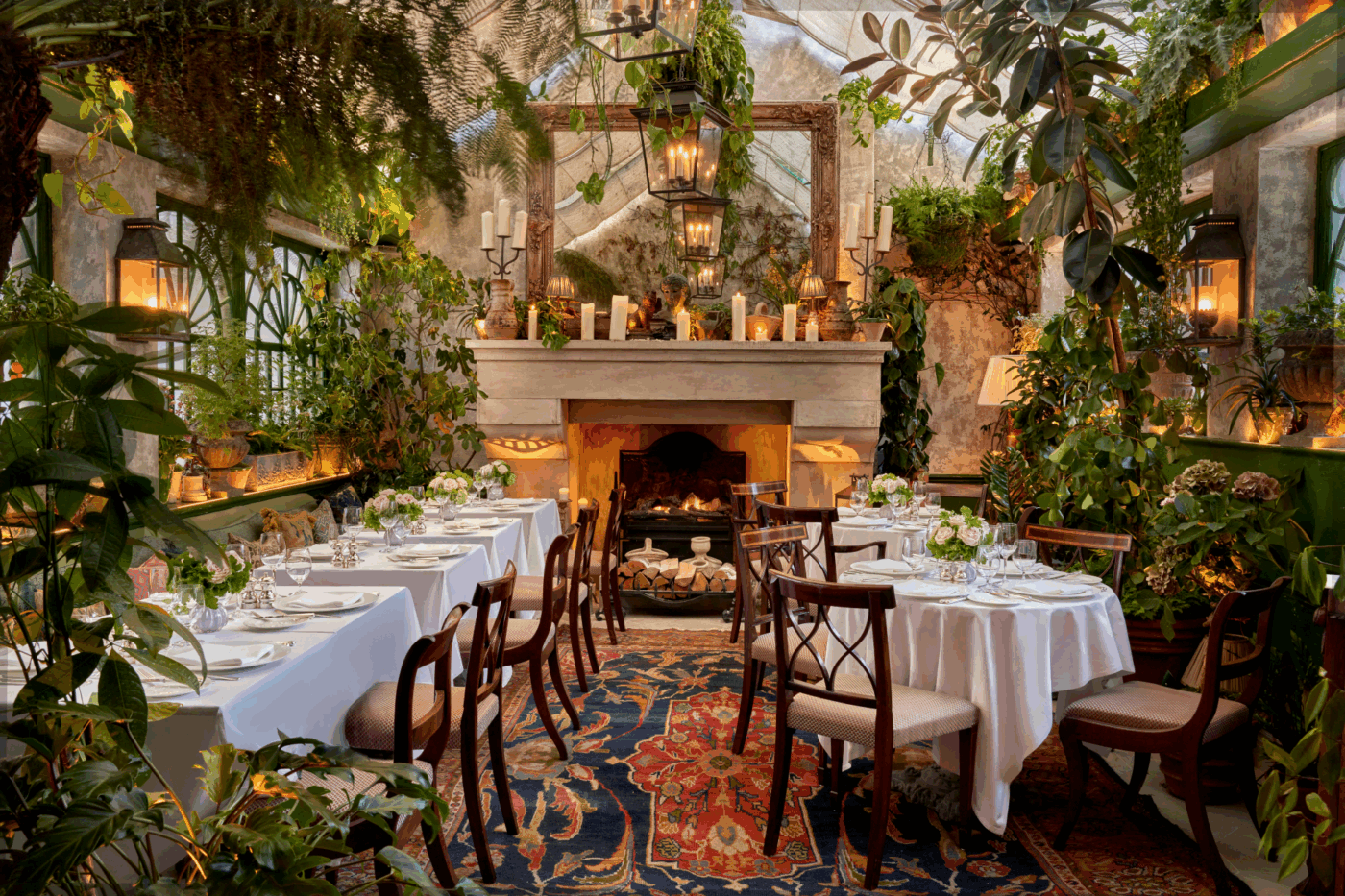Back when they were in their Regency period infancy, the popularity of gentlemen’s clubs among London’s aristocracy stemmed from the places being simulacrums of home. The fireplace would crackle heartily, the roast beef would be plentiful, and the cognac would always be of an appropriate vintage.
Except none of the above elements ever really bore close scrutiny to the home life of even the most sybaritic members of the nobility. Back in the homestead in those days, you had to check if the kitchen staff had any decent meat in the pantry and, if the serving staff had gone to bed, you may have had to stoke the fireplace and pour the cognac yourself.
The blue door on Charles Street that leads into Mark’s Club is intended to look domestic. Though whose home this space could ever have belonged to is open to question. The immense George Stubbs equine portrait in the tiny lobby, the Morris & Co wallpaper, the gentle diurnal tick of the mantelpiece clock, the deep carpets and steep, creaking stairs make for a home that is gravid with the stylistic motifs of the period just before a generation of men were sent to the French and Belgian trenches.
![]()
Yet, if Mark’s Club were a home, it would be too grandiose for PG Wodehouse, too tidy for Robert Falcon Scott, too secular for GK Chesterton and too patriarchal for Emmeline Pankhurst. Mark’s Club likes to think of itself as a ‘home away from home’, whatever that means. But it’s nothing of the sort – in the best possible way. It’s a fantasy home. It’s not a home that resembles anything anyone has ever lived in.
Its history is a comparatively short one. The late Mark Birley, who founded nearby Annabel’s club in the 1960s, decided he wanted to open a different kind of club; one more attuned to the storied gentlemen’s clubs of St. James’s, à la White’s and Boodles, but perhaps without the weight of history that had, by the turn of the ’70s, turned these places into flock-wallpapered convalescent homes for the last of the Victorians.
Mark’s Club opened in 1972 and Birley himself later remarked that the Charles Street townhouse possessed ‘more of my personality than any of my other places’. Birley’s father, Oswald, was a distinguished portrait artist, yet there are none of Birley Senior’s pieces on the walls today. Instead, the art is of the auricular persuasion of either somewhat fey-looking young men (Théodore Rousel’s 1670 Portrait of a Young Gentleman or, predominantly, oil paintings of stags, horses and dogs). It’s all very reassuring, very roast lamb with all the trimmings, and redolent of the type of city gent who knows how to wear a tailored suit yet has a country wardrobe brimming with Barbour.
Things have changed a little since 1972. The waiters will still set ablaze your crêpe Suzette tableside and the Mark’s Club martini is still one of the most potent in town. But the townhouse, which has a capacity of barely 100 on its busiest nights, was given a makeover last year, stripping back some of the more en trop modernisations to make the club look as it did upon opening.
Richard Caring, who bought Mark’s Club from Birley shortly before his death in 2007, has talked of retaining the club’s ‘quintessential British identity’. It succeeds. This place is as British as John Bull joining Jane Eyre and Elizabeth Bennet for a dinner of roast beef and Yorkshire pudding. Of course, no one in that triptych are real people. And that’s what Mark’s Club really excels at: providing a sense of Albian identity that we know is folkloric but, even to us natives, doesn’t feel ersatz or insincere.
The 1950-era copies of Country Life on the sideboard, the acres of mahogany, the clarets, the English cheeses, the Dover sole, the white tablecloths; it should feel atavistic and heavy. But, somehow, all this velvet and polished wood adipose conspires to create a feeling of terpsichorean elan; as if, deep down, we Brits know that the starch, mutton chops and pie-crust of this rainy island are no match for laughter, filled glasses, and having somewhere to hang our sopping umbrella.
![]()
I’d read that the club’s re-togged interior is based on the rooms in Richard Caring’s own London home. I suspect, however, that should I surprise Caring in his kitchen for breakfast one morning, there would be a half-eaten bowl of muesli on the table and a mote of crumbs around the bottom of the toaster.
This is what happens in homes and, indeed, any actual ‘home away from home’. Mark’s Club is neither of these things. And it’s all the better for it.
Membership £1,250 + £500 joining fee for under-35s; £2,750 + £1,250 joining fee for over-35s. Visit marksclub.co.uk
Read more: Starry establishments: London hotels with Michelin-starred restaurants
